Few players have had as much of an impact on RC Lens’ stellar 2020/21 Ligue 1 campaign as 20-year-old Loïc Badé, who made the move to Sang et Or from Le Havre last summer with minimal appearances to his name at senior level and no prior experience of playing in France’s top-flight.
Despite his inexperience, Badé, who stands at 191cm (6’3”) tall and weighs 89kg (196lbs), has been a giant for Lens, not just in terms of his physical height but also in terms of his influence on the pitch this season, with ligue1.com highlighting him as a ‘rising star’ in an article that described him as a ‘leader’ of the Pas-de-Calais side, compared him with four-time UEFA Champions League winner with Real Madrid Raphaël Varane and quoted fellow Lens summer signing Ignatius Ganogo as stating of Badé: “You’ll see him playing for a top, top side soon enough.”
The centre-back has enjoyed 1980 minutes of Ligue 1 action so far this term – more minutes than all but three other Lens players – playing a central role in helping Franck Haise’s side to enjoy a positive return to top-flight football just one season after achieving promotion, with Sang et Or sitting in sixth place at present, threatening to take their challenge for a European qualification spot all the way down to the wire.
In this tactical analysis,
which is a scout report, we’ll analyzeLoïc Badé’s role within Haise’s tactics this term.
We’ll examine his game’s notable strengths and weaknesses, how his role at Stade Bollaert-Delelis accentuates his strengths, leading to his impressive campaign, and share our thoughts on how true Ganogo’s exciting prediction for the 20-year-old’s future could prove to be.
Loïc Badé’s Position at Lens
Haise’s Lens have played in a 3-4-1-2 shape most of the time this season.
Badé has operated in the centre of that back three, typically with Jonathan Gradit to his right and Facundo Medina to his left.
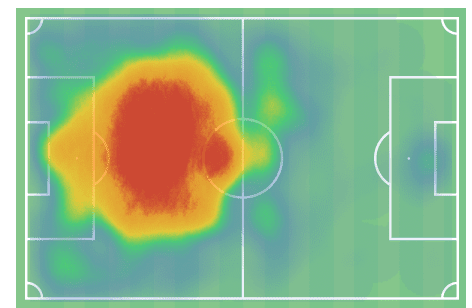
Figure 1 shows Loïc Badés heatmap for the 2020/21 campaign.
As this heatmap indicates, the centre-back’s role in this squad involves covering quite a lot of ground centrally.
This heatmap shows a lot of colour inside Lens’ half of the pitch, within the width of the penalty box, covering from Lens’ six-yard box all the way up to the halfway line.
We typically see him operating in these central areas both on and off the ball.
Despite his base position in the centre of the back three, he doesn’t just stay in that extremely central position.
His role requires him to drop slightly deeper than the rest of Lens’ defence at times, providing cover for the centre-backs on either side of him should the opposition play the ball in behind.
This often sees him move into the areas closer, in terms of width, to the edge of the penalty box.
Additionally, we can see some colour in even wider areas, which are positions that Badé is occasionally dragged into.
However, he’s found in these positions less than the more central ones, though he’s comfortable in those areas, too.
Lastly, this heatmap also indicates that Badé sometimes pushes up as far as the very centre of the pitch and into the opposition’s half.
He’s often found in these positions on the ball, where his role requires him to carry possession out from the back and into what you might describe as a more traditional holding midfielder position, sitting in front of the other two centre-backs and behind Lens’ two central midfielders.
From here, he frequently demonstrates his passing range, operating as a player through whom Lens can switch play.
However, on other occasions, he also performs this role deeper in the centre of the back three, so he doesn’t always move into the more advanced position.
Providing cover in deep positions is a crucial element of Badé’s role off the ball with Lens, and this job requires quality reading of the game, anticipation and positioning.
Badé’s 1v1 defending and tackling ability are tested when dragged into wider areas.
Meanwhile, on the ball, Badé plays a key role in helping Lens to progress the ball upfield and switch play from one side of the pitch to the other, which is particularly important versus sides defending deep.
A lot of Sang et Or’s play moves through him in this regard, which sometimes tests his long-ball playing quality when he is required to switch the play.
Loïc Badé Style Of Play
Of Lens players with more than 800 minutes played, only Massadio Haïdara has engaged in more defensive duels per 90 than Badé (7.86) this season.
In addition to being one of Lens’ most active defenders in terms of defensive duels, Badé has also been very successful when he has opted to engage in one this season.
The Frenchman boasts the third-best defensive duel success rate (66.49%) of any Lens player.
While he’s been tasked with committing challenges more often than most of his teammates, he’s also been more successful with his challenges than most.
Part of the reason for that is evident in the centre-back’s ability to defend aggressively in wide areas.
Due to his role in Haise’s system, he has to do this fairly often.
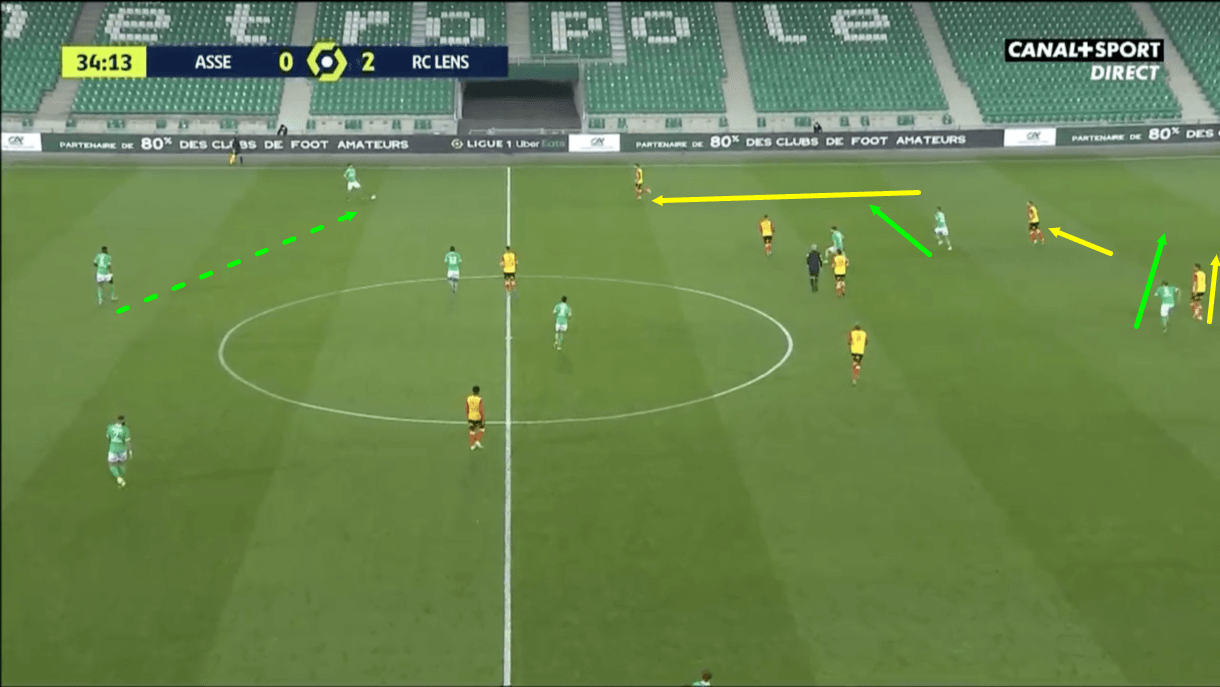
In figure 2, we see Saint-Étienne building out from the back versus Lens, who are in their 3-4-1-2 shape.
At this moment, Saint-Étienne have found their left-back, Timothée Kolodziejczak, in a fairly deep position.
As he receives the ball, he attracts pressure from Lens’ right wing-back, Jonathan Clauss.
Another Saint-Étienne player, who is positioned centrally and is being marked by Lens’ right centre-back, Gradit, then tries to exploit space behind Clauss and provide a progressive passing option for Kolodziejczak, which drags Gradit out of position, resulting in Saint-Étienne’s centre-forward, Charles Abi, similarly making a run into the space behind him, providing a long passing option for Kolodziejczak.
Lens have one of the most aggressive presses in Ligue 1.
They have the third-lowest PPDA (10.72) in the league at present, and this kind of pressing sometimes requires the wing-backs and the wide centre-backs to push into more advanced positions.
As Figure 2 demonstrates, one danger with this is that it can open up space behind the backline for the opposition to exploit.
This is where Badé, as the central centre-back, has to use his anticipation, positioning and pace to provide cover.
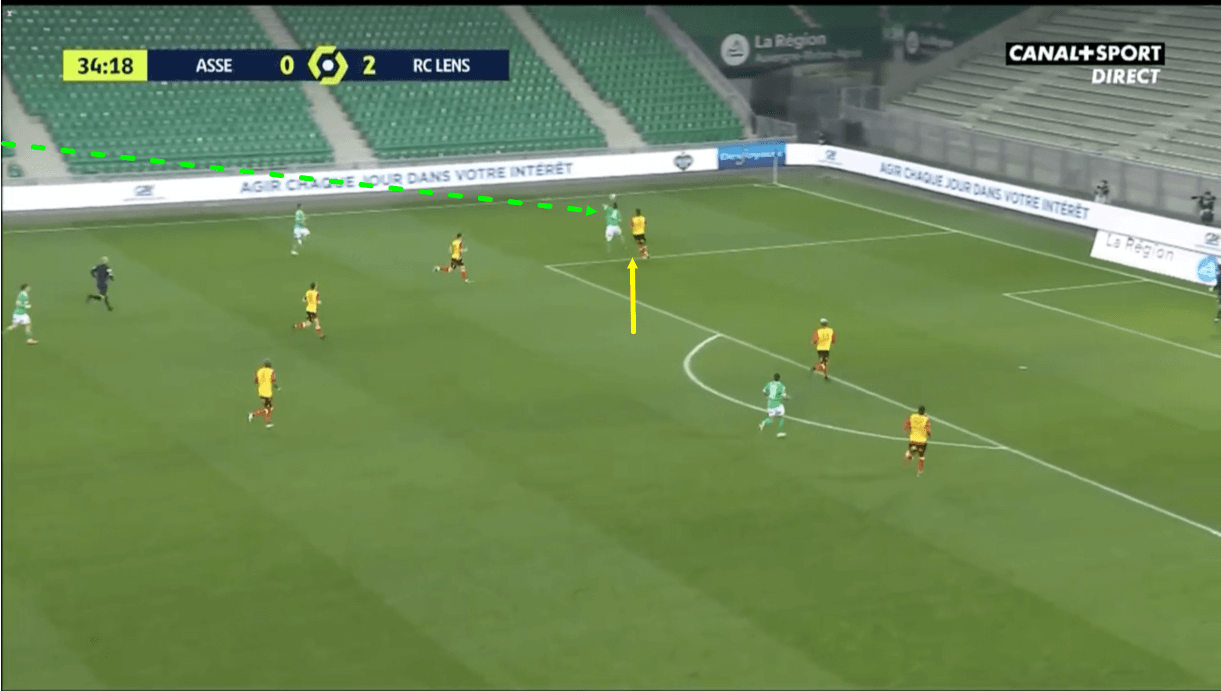
As Abi makes his run in behind Gradit, Figure 3 shows that Badé tracks him and ultimately pulls him out wide.
However, he succeeds in preventing the attacker from taking the ball in his stride and continuing towards the goal, also forcing him out wide into a less threatening position.
The Saint-Étienne man does well to avoid being dispossessed by the Lens defender on this occasion, holding the ball up well and waiting for reinforcements to try and keep the attack alive.
However, Badé’s anticipation of the run, ability to make up ground quickly to keep up with Badé, and positioning are key in slowing this particular attack down.
Badé is often pulled into these positions on both the left and right of defence due to his cover-providing role in this squad.
He thrives in this role due to his ability to read the game.
He’s not a slow defender by any means.
As mentioned, he’s good at making up ground in a pacey manner, and this isn’t an area that he can typically be exploited.
However, that’s not to say that no striker can beat him in a straight-up sprint – they can – but Badé excels at combining the pace he has with other attributes – his anticipation, positional sense and strength to get in between the opponent and the ball when required, to ensure opposition attackers don’t beat him.
While he has a decent pace, he relies on those other attributes more to be so effective.
Opposition attackers often still try to beat him when he approaches them in these positions, and Badé is pretty reliable in these scenarios.
This shows one reason his defensive duel volume and success rate are so high.
Badé doesn’t always wait for the opponent to make the first move and try to beat him.
However, he’s a proactive defender and likes to win the ball back in higher/wider areas of the pitch, as opposed to deeper areas, so he’s not shy about committing to a challenge in positions like this, based on his judgement.
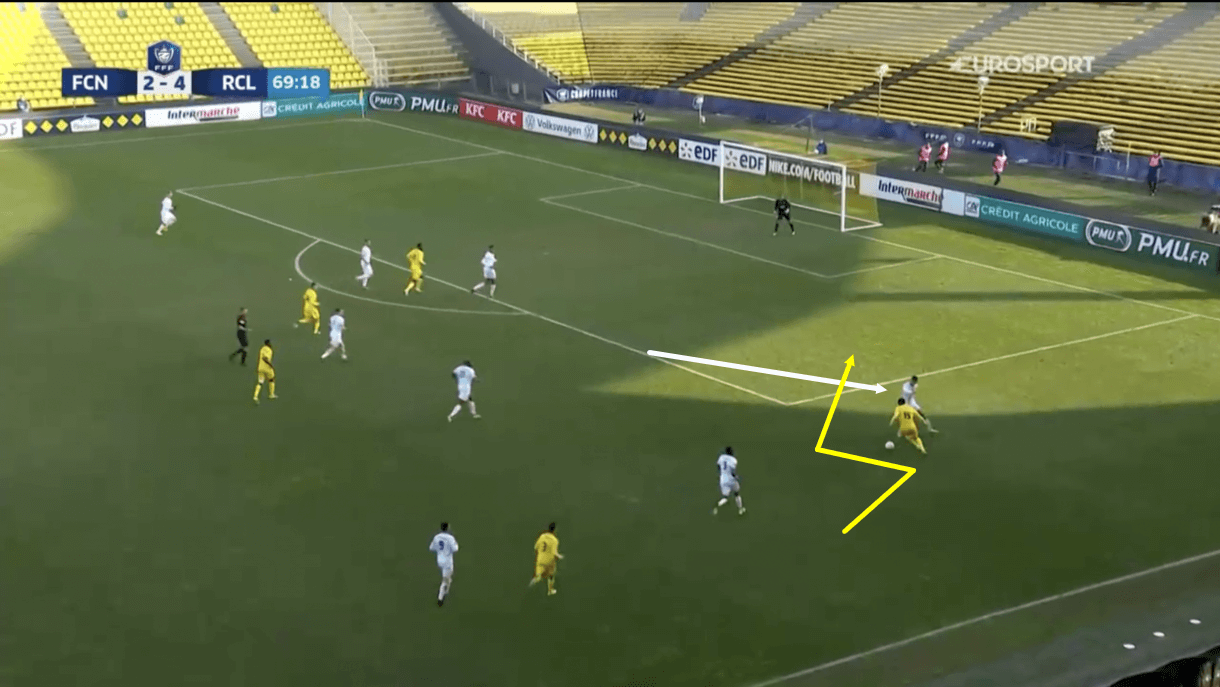
This kind of aggressive defending can be very effective, especially when Badé is so good at setting up favourable 1v1 scenarios for himself via his positioning and anticipation.
However, it’s still risky and can go wrong if he overcommits.
Figure 4 shows us an example of one such occasion where Badé was dragged out wide and ended up getting beat by the opposition attacker.
The attacker could essentially bait Badé into committing to a challenge before demonstrating some good dribbling to change direction, cut inside, and burst past, leaving Badé in his tracks.
This has happened on multiple occasions this term.
While Badé is generally reliable in these scenarios, hence why his defensive duel success rate is not much worse, he’s not perfect, and good, agile dribblers can sometimes get the better of him.
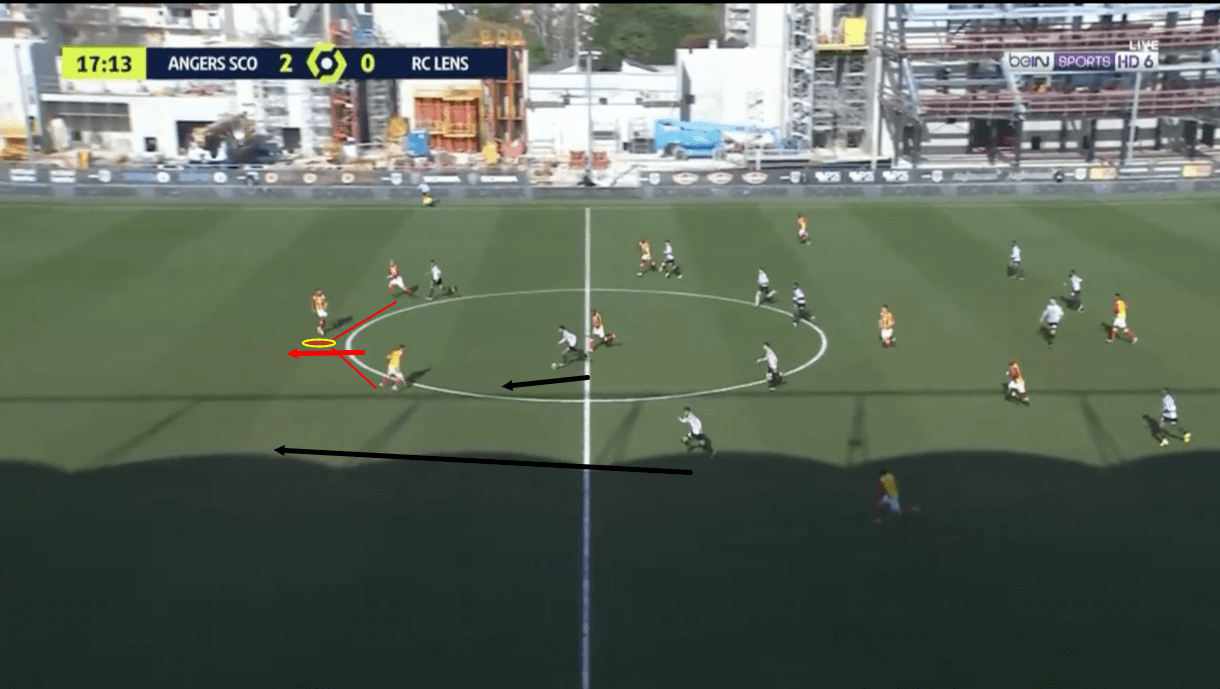
While it’s a notable part of his role, Badé isn’t always getting dragged out wide to defend.
He also defends in more central areas.
In Figure 5, we can see the centre-back sitting in a more natural position for his role in this system, in the very centre of the back three, slightly deeper than his two central defensive partners.
Additionally, here, we can see that the opposition have built past Lens’ midfield line and are now carrying the ball straight towards the backline, forcing the right centre-back to step out and apply pressure to the ball carrier.
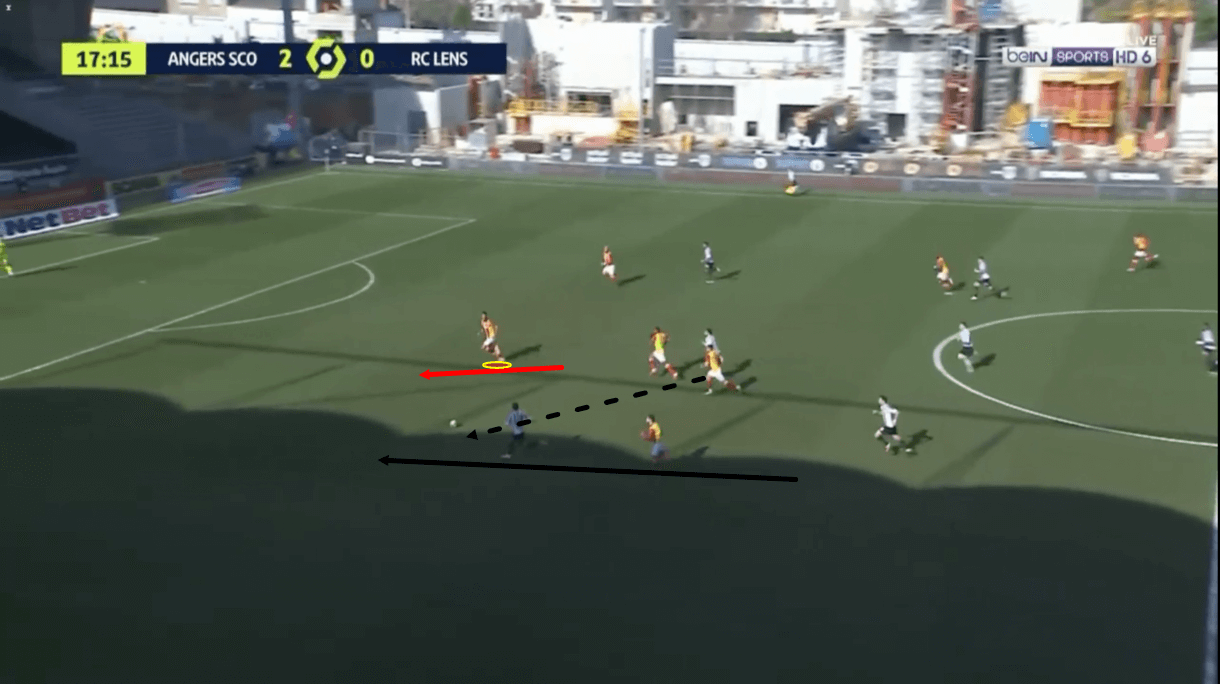
As the play progresses, Figure 6 shows the ball carrier passing to a runner on his left, attempting to attack the space left open by the right centre-back.
Badé is required to provide cover here, and he does so very effectively, largely thanks to his intelligent movement, particularly the way that he angles his run.
As this opposition player receives the ball, Badé keeps himself between the ball carrier and the goal, blocking off the space he could potentially have used to dribble the ball towards the goal and create a 1v1 with the goalkeeper.
While the centre-back likes to defend aggressively and prefers winning the ball back higher up the pitch, he doesn’t rush in situations like this.
He tends to be much more patient when dealing with opposition attackers carrying the ball towards him than in situations like the ones we observed in Figures 2 and 3, where he aggressively engaged in a duel with an attacker getting onto the end of a long ball.
In Figure 6, this ball receiver, who is also under pressure from behind, keeps carrying the ball forward, with the distance between him and Badé slowly but surely closing.
The centre-back ultimately sets up a very favourable duel for him, drawing the attacker towards him, forcing him to try and beat him 1v1, and ultimately regaining possession for Lens via a tackle on the edge of the box.
This exemplifies how Badé creates favourable scenarios through his movement, positioning, and calmness.
He’s extremely difficult to beat in scenarios like this, where he doesn’t have to commit too soon but instead can force the attacker to commit to trying to beat him.
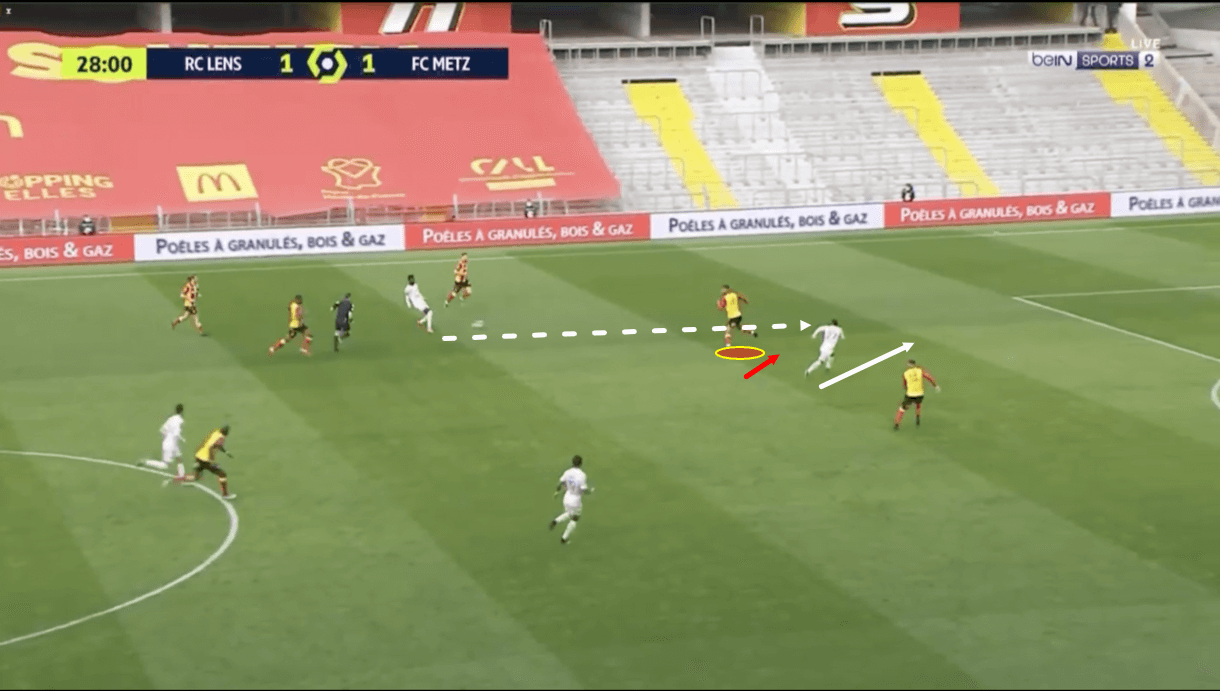
Badé is also one of Lens’ most active defenders in terms of making interceptions.
The 20-year-old has made 5.78 interceptions per 90 this season, which is more than all but one other Lens player.
His positioning, movement and tendency to try and win the ball higher up the pitch are also key elements of his game when making interceptions.
Figure 7 shows us a typical example of Badé positioning himself to perform an interception.
Here, the passer plays the through ball to the runner behind Badé on the side of the attacker that’s closest to the defender.
This is an example of a situation similar to the one we analysed previously, where Badé was dragged out wide.
However, on this occasion, the attacker is making his run more centrally rather than into the space in the wider position.
Aware of the runner’s movement behind him and the passer’s intentions, Badé opts to try and cut the passing lane via his movement to intercept the ball before it reaches the attacker rather than track the forward’s run.
By doing so, he can try to win the ball in a more advanced position, which we know he likes to do.
He often succeeds at this thanks to his positioning and anticipation, resulting in him making as many interceptions as he has this term.
However, just like when he’s dragged out wide to engage in defensive duels, these defensive tactics are risky, and there have been occasions where Badé has been unable to stop the pass as it’s played in behind, resulting in the runner receiving the ball in a dangerous area.
Lens have been happy to take these risks, however, to try and win the ball higher and Badé has largely thrived in this system.
Loïc Badé Ability on the ball
Much of Lens’ play in possession has gone through Badé this season.
He has made 60.01 passes per 90 minutes this term, more than any other Lens player except left centre-back Medina.
Meanwhile, he’s got the best pass success rate (90.16%) of any Lens player to have enjoyed more than 800 minutes on the pitch this season, except for right centre-back Gradit.
The Frenchman is generally a very reliable player on the ball, which is important for his central role in possession.
If he were sloppy with his passes in his position, then it’d be quite dangerous for Lens, and he’d, without a doubt, be targeted heavily by the opposition.
However, he’s good at providing a central passing option for his teammates and subsequently playing safe passes to others, often laterally rather than forward.
His team relies heavily on him to switch the play from one side of the pitch to the other.
He also often plays an important role in helping his team progress the ball past the opposition’s first line of pressure.
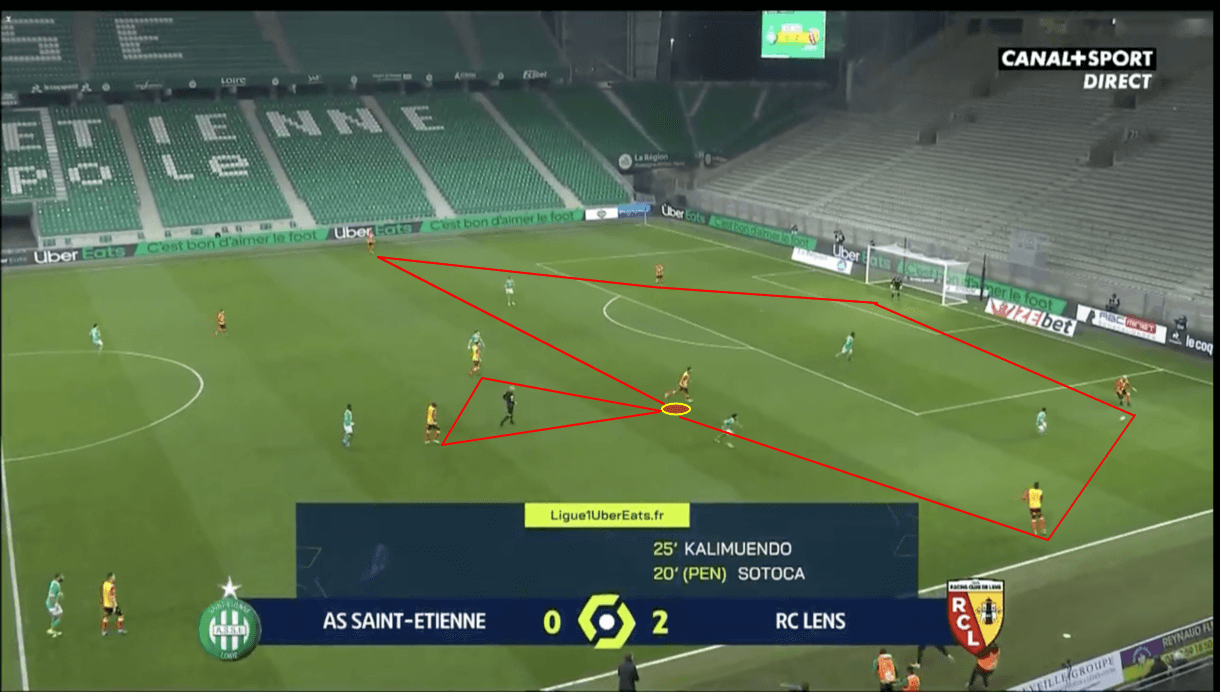
Figure 8 shows us an example of Lens’ shape during the very first phase of the build-up.
This is how Sang et Or typically shape up during this phase of play, and Badé plays a role that sees him sit one line higher than his central defensive partners, effectively operating as a holding midfielder.
Lens’ right and left centre-backs sit on either side of the goalkeeper, and Badé sits in front of them, behind the two central midfielders and in between the two wing-backs.
So, while Badé often plays deeper than his central defensive partners off the ball to provide cover behind, the opposite is often the case on the ball.
From here, he can receive passes in this central position, offering his teammates a reliable passing option between the lines to help them progress from one point to the next.
He performs well in this role.
He’s not likely to receive a pass here, turn, get his head up and set his team straight through on goal.
Still, he is good at receiving the ball, turning and keeping the play moving upfield, progressing his side, slowly but surely, towards that destination of the opposition’s box.
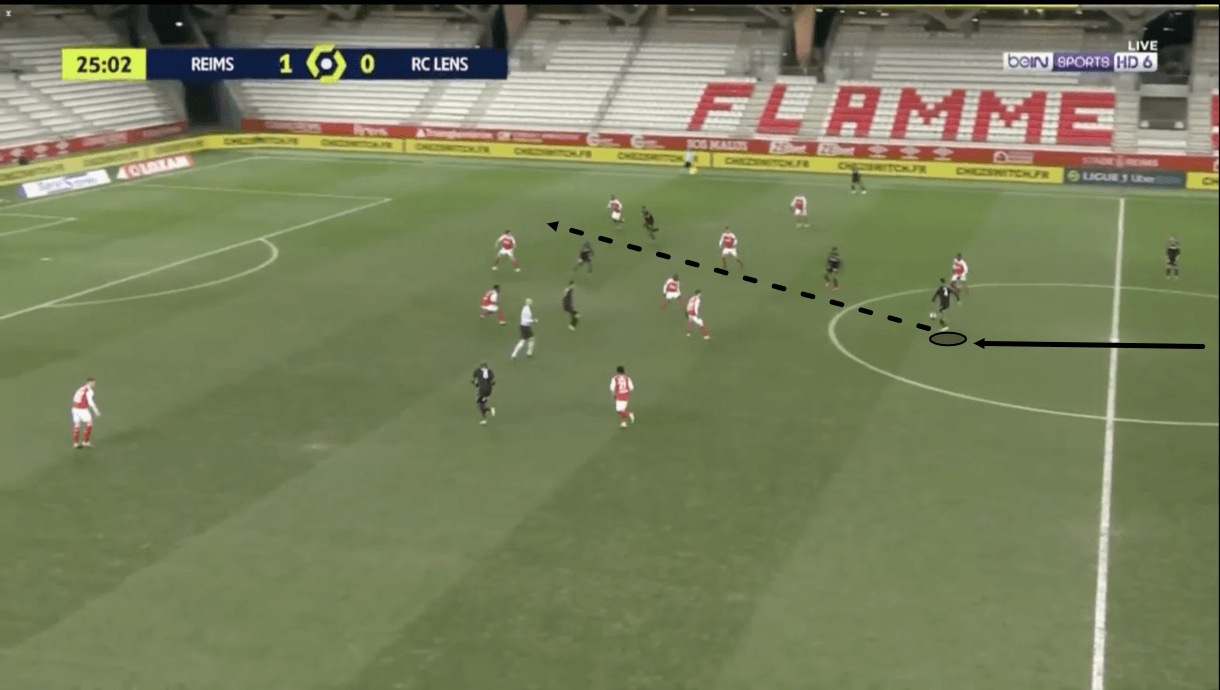
Figure 9 shows another example of Badé in a more traditional holding midfield position between the other centre-backs and the central midfielders.
However, on this occasion, he had been sitting between the centre-backs in his normal base position before he carried the ball out into the vacant space ahead of him.
In this 3-4-1-2 shape, Lens obviously lacks a holding midfielder, which leaves that space open right in front of Badé.
The 20-year-old is very comfortable carrying the ball out from the back and likes to exploit this space with his movement.
In addition to progressing the play for Lens, this movement can create space for his teammates higher up the pitch, as his ball-carrying can attract pressure.
On this particular occasion, as the play moves on, Badé plays a lofted through ball for an attacker making a run in behind the opposition’s backline, however, the ball is ultimately intercepted, allowing the opposition to regain possession.
While Badé is comfortable with carrying the ball out from the back, playing the final ball in behind like this is not something he’s particularly great at.
The centre-back often plays passes that are either too strong or weak like this.
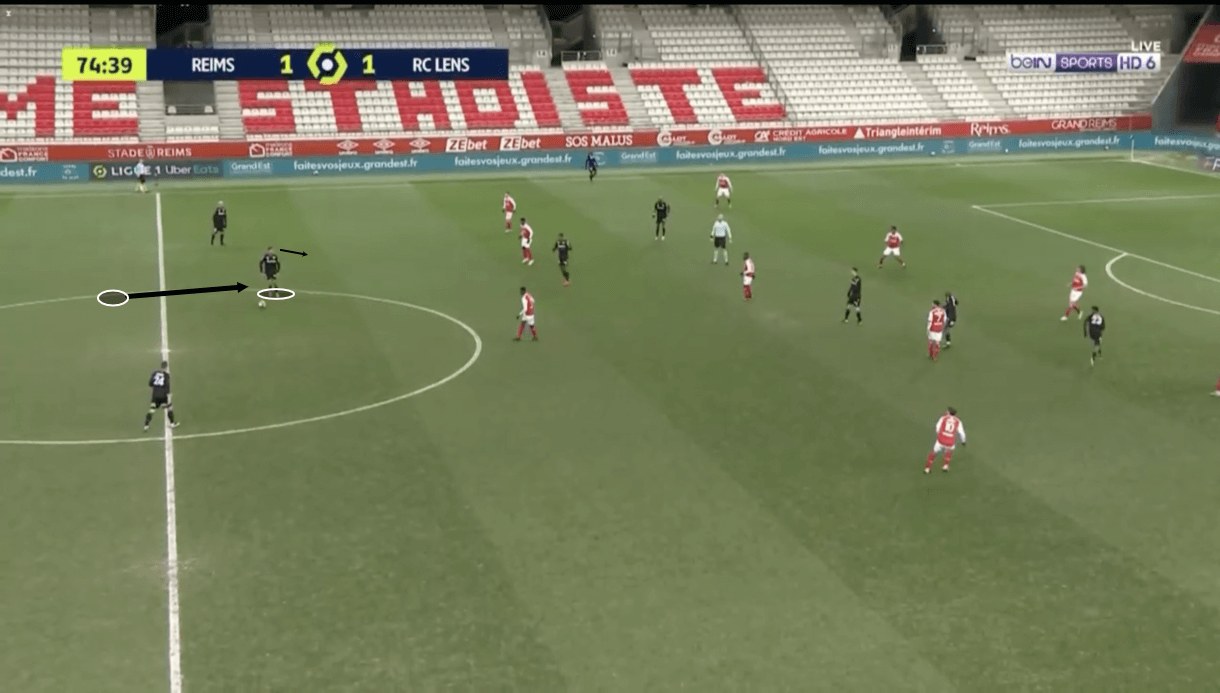
However, as mentioned, Badé’s long passing isn’t all negative.
His ability to switch the play is a key part of his game on the ball, particularly when his side is playing against an organised defensive block that isn’t pressing them very aggressively, as in Figure 10.
In these scenarios, central space is often blocked off, and the team on the ball often tries to drag the opposition’s defensive shape around by quickly switching the play via long balls.
Additionally, here in this image, we can see Badé in the holding midfield-style position again, having pushed slightly ahead of his central defensive partners and into the opposition’s half on the ball.
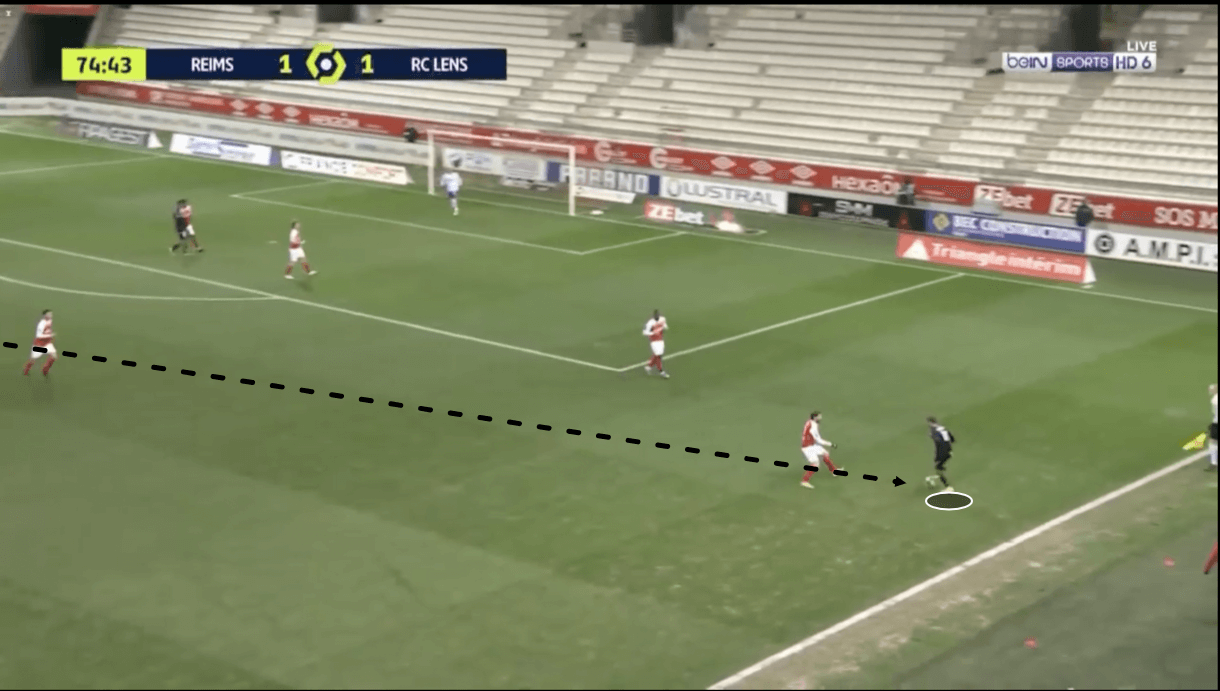
As the play progresses, Figure 11 shows us that after Badé got his head up and spotted his target, he managed to play a perfectly weighted and directed ball out to the right-winger, increasing the offensive pressure on the opposition, forcing their players to move, and creating potential weaknesses in their defensive block.
This highlights that while Badé sometimes struggles with playing lofted through balls in central areas, his ability to switch the play from one side of the pitch to the other via long balls is better.
He can play accurate long balls from his central position to either wing at an impressive pace, causing problems for the opposition and boosting his side’s attack.
This is a key strength of his game on the ball.
Loïc Badé Ability in the air
Lastly, Badé’s aerial ability is another key strength of his game.
As mentioned, the centre-back is 191cm tall and weighs 89kg – he has a very large frame and knows how to use it.
He’s very imposing in the air, engaging in 7.01 aerial duels per 90 this term – the 18th-most aerial duels of any player in Ligue 1 – while he has currently got 63.03% aerial duels success rate, which is the 22nd-best aerial duel success rate in France’s top-flight.
This makes him one of the most frequent and successful aerial duel competitors for the team that’s engaged in more aerial duels than any other side in Ligue 1 this season.
As the central centre-back, Badé is always present in the box between his fellow centre-backs to deal with crosses, which he often does thanks to his anticipation, positioning and physical traits.
These qualities also help him to dominate aerially when defending set-pieces.
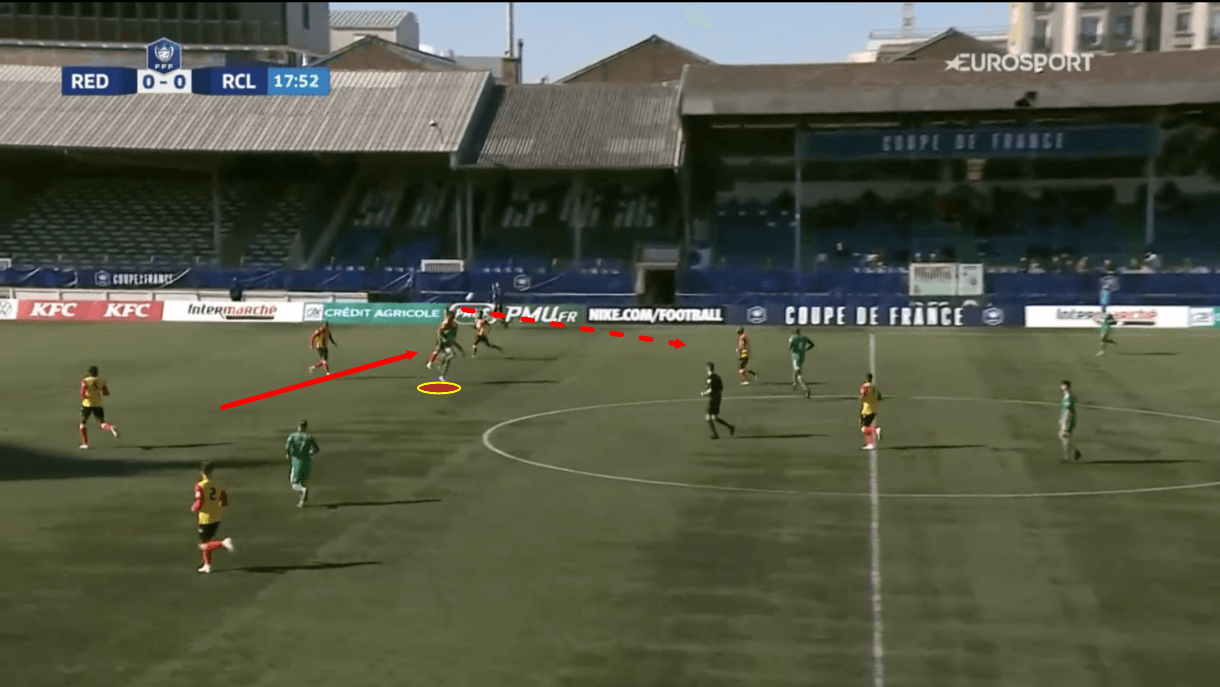
Due to his aerial ability and tendency to try and win the ball higher up the pitch where possible, Badé often finds himself stepping up to contest aerial duels in front of the rest of Lens’ backline in this kind of position, which we can see in Figure 12, to help his team try to regain possession after an opposition goal kick.
He’s generally good at reading the flight of the ball in these situations and physically imposing himself on the opposition to win aerial duels that often result in Lens regaining possession.
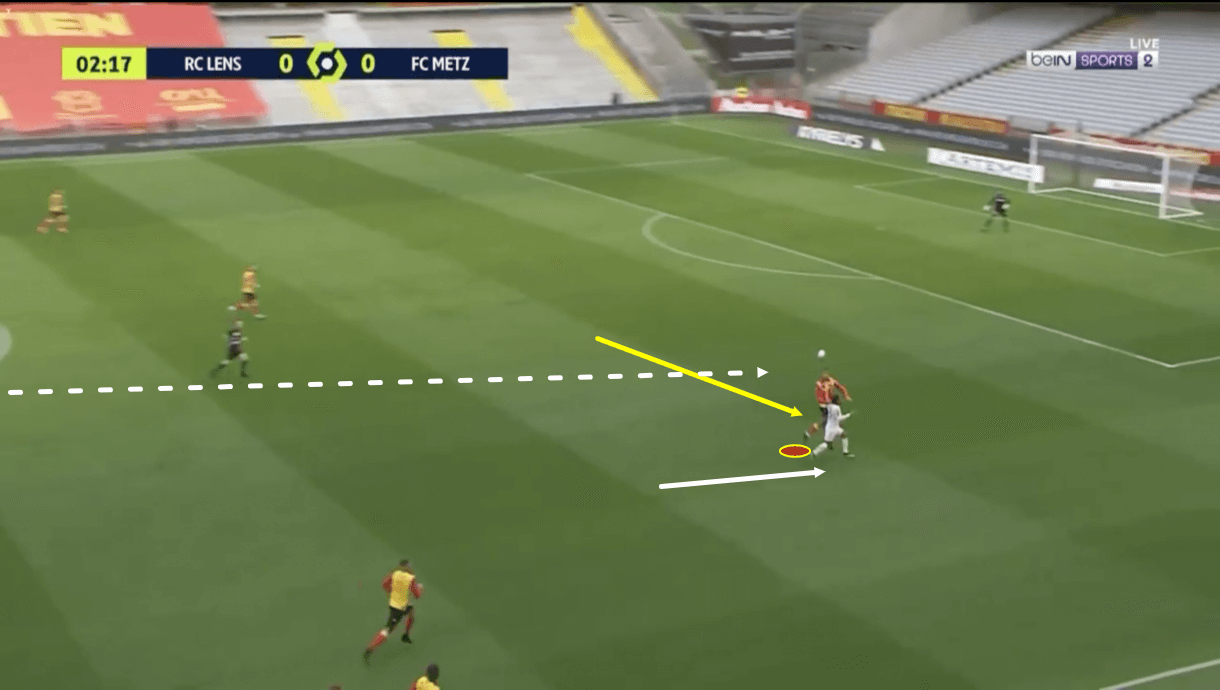
Badé’s aerial ability also plays an important role in Lens’s regaining possession.
He often relies on this aspect of his game when intercepting the opposition’s lofted-through balls.
Here, in Figure 13, we see an example of one such occasion where Badé used his aerial ability to cut out the opposition’s lofted through ball before the runner could get onto the end of it, as he shifted over to the left side of the pitch, managed to judge the flight of the ball and time his run and jump perfectly to take the ball out of the path of this attacker.
The centre-back often deals with lofted through balls in this way, rather than tracking the attacker’s run and trying to win the ball back at a later stage, to win the ball back or at least put a stop to the attack somewhat higher up the pitch.
This skill combines his positioning and anticipation with his aerial quality.
Badé is very impressive in all these areas, making it one of the most impressive aspects of his game.
As a result, it can be very difficult for the opposition to pull off lofted-through balls against him.
Conclusion
To conclude this tactical analysis in the form of a scout report, we feel that Badé has several impressive qualities that make him an exciting prospect for the future, as his teammate Ganogo suggested earlier this season.
He’s very impressive physically and mentally, with few major weaknesses in those areas.
Badé also has some very impressive technical aspects to his game and some potential areas of improvement, as we’ve discussed.
Still, overall, his qualities are generally ideal for the role that he plays for Haise’s side at present, both on and off the ball.
This explains why he’s been such a standout performer for Sang et Or this term.
Should he continue in this vein for the remainder of his time at Lens, however long that is, he’ll surely do his growing reputation no harm.





Comments